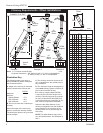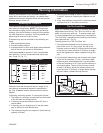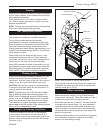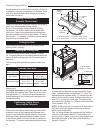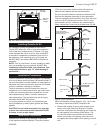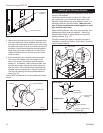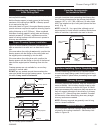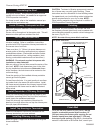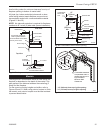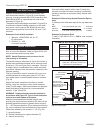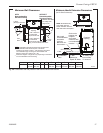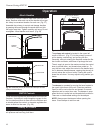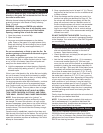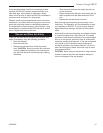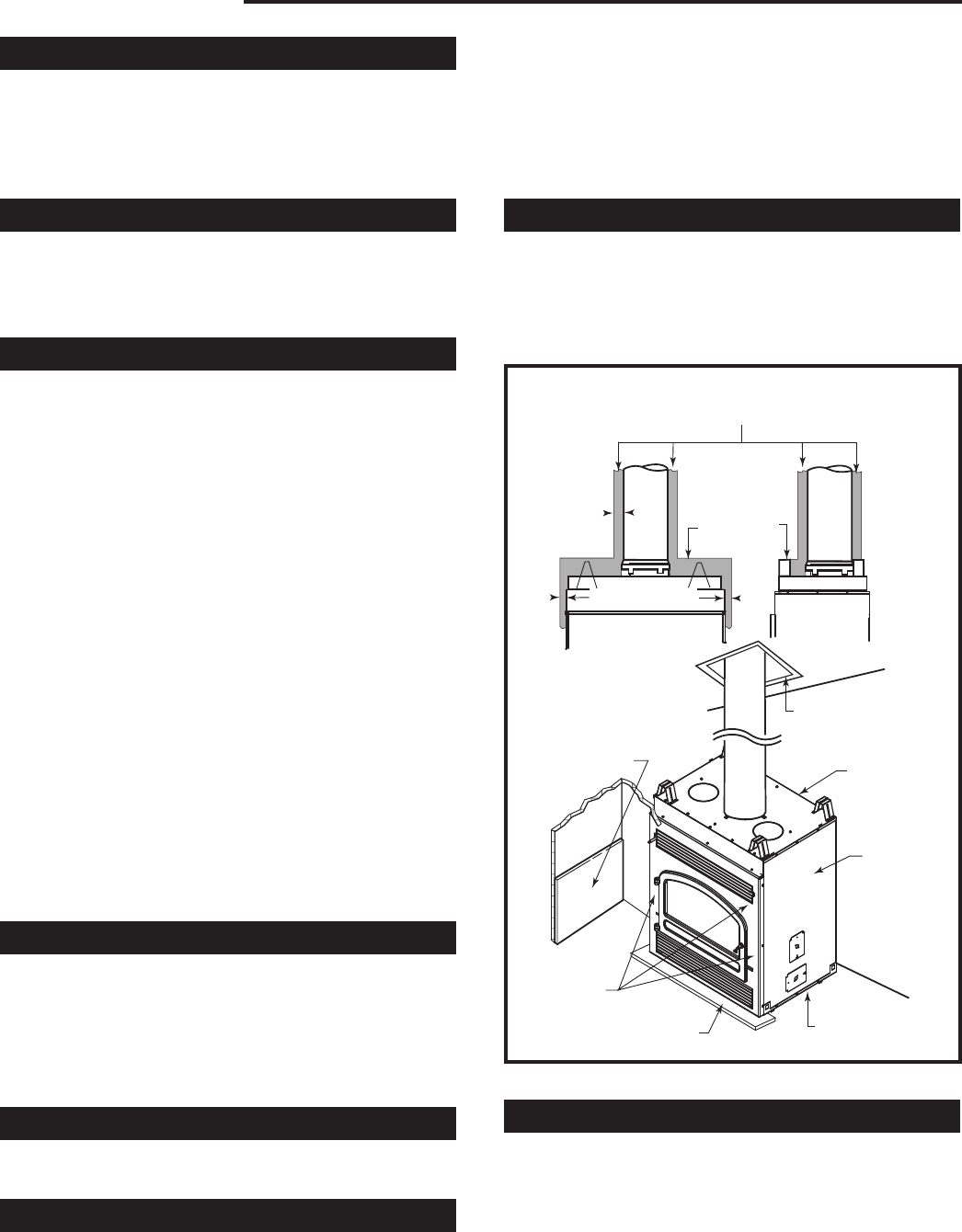
14
Vermont Castings EWF30
20008662
Penetrating the Roof
Run pipe to roofline. Since chimney system must be
vented to the out-of-doors, you must use an approved
CFM Corporation termination.
If a chase is used, refer to the installation manual pro-
vided with the termination cap.
Locate Chimney Centerpoint on Roof
Use same procedure detailed in locating center point of
the flue system.
Drive a nail up through roof at the center point. This will
determine center point on outside of the roof.
Cut and Frame Roof Hole
Size of roof hole varies with the type of chimney ter-
mination installed. Refer to installation instructions
provided with CFM Corporation chimney termination to
find correct size of roof hole.
There must be a 1¹⁄₂” (38 mm) air space between out-
ermost portion of chimney sections and any adjacent
combustible surfaces. (Combustible surfaces include
burnable materials such as: ceiling members, joists,
flooring, combustible insulation and roof structures.)
WARNING: Do not pack required air spaces with
insulation or other materials.
Mark an outline of the roof hole around the center of the
point nail. NOTE: Hole dimensions given in the chim-
ney top installation instructions are horizontal dimen-
sions; therefore, the hole size must be marked on the
roof accordingly.
Cover the opening of the installed chimney so debris
cannot get into the system.
Cut and frame the hole. It is good practice to use fram-
ing lumber that is the same size as the rafters. Install
the frame securely because the chimney top and flash-
ing anchored to the frame must be able to withstand
heavy winds.
Install Remainder of Chimney Sections
Since you have already preplanned the height of your
termination according to the Ten Foot Rule, continue to
install pipe to the predetermined height.
Check the chimney top installation instructions for
details on how high above the roof top the chimney sec-
tions (all pipes) should extend.
Install Top Housing or Termination
Follow the installation instructions provided with the
chimney termination you have selected.
Installing Chimney in a Chase
Refer to Figure 2, Page 5 for an illustration of a typical
chase installation.
FP1199
EPA36
AIR SPACES
circulating models
3/20/02 djt
Air Space Clearances
Combustible framing material MUST NOT
penetrate AIR SPACE (shaded areas)
Standoff
1¹⁄₂”
(38 mm)
Firestop
1” (25 mm)
Space to Back
1” (25 mm)
Air Space
to Sides
Wall
Shield
0” Clearance
to Floor
Hearth Extension
FP1567
Fig. 20 Minimum clearances to combustibles.
1” (25 mm) Air
Space to Sides
NO material
may cover
cast face
CAUTION: Treatment of firestop spacers and construc-
tion of chase may vary with type of building. These
instructions are not a substitute for local building codes.
You must check your local building codes to determine
specific requirements for your city or state. NOTE:
Other building materials may be required in addition to
CFM Corporation Firestop Spacers.
Finishing
CAUTION: All joints between the finished wall and
the fireplace surround (steel front) must be sealed with
noncombustible material to prevent cold air leakage into
the room. (Fig. 20, 21)
NOTE: No material may cover black cast face.
Finish Wall
Finish the wall with material of your choice. Do not
install a combustible mantel shelf less than 12”
(305 mm) above the firebox grille opening. Do not
install a mantel face plate less than 6” (159 mm)
from top of grille opening. (Fig. 22) If a combustible
material is used below a flat mantel shelf, consult your



